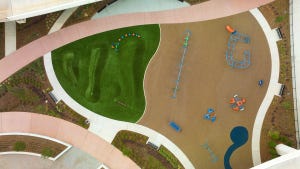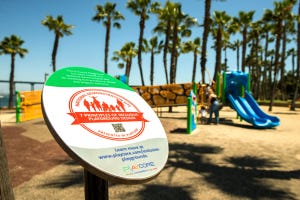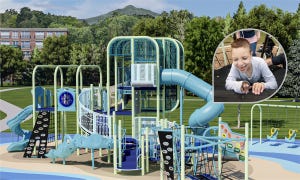In previous posts, we talked about the different types of ways you can raise money for your project. In this post, we will unpack one of those examples; writing grants. A grant is a sum of “free” money given by the government, foundations, or corporations, to groups (typically nonprofits) that go through a rigorous application process against other applicants. Follow our guidelines below and your “wishes” just might be granted!
Wish #1 - The perfect grant source
The best way to find relevant grants to apply for is to look on the Foundation Center’s website, www.foundationcenter.org, where they provide information about philanthropy and a comprehensive database on national grantmakers. You can search for organizations that focus on children’s play and playgrounds, but also think outside the box. Your playground site will promote education, physical fitness, health and wellness, outdoor recreation, and community development. Don’t be afraid to reach out to organizations that cover those topics as well, especially if your project fits their philanthropic mission, vision, and requirements.
Wish #2 - A tailored grant application
You have chosen the grant to apply for, now it’s time to set your organization apart from the competition through your application! Do yourself a favor. Do not send the same grant application to every organization. While it may be good to start with a rough sketch of your project’s strengths, goals, and timeline for completion, it’s not good to use the same application for every single organization. You have to understand each organization’s criteria for grant application and write your grant specially tailored to those requirements. Everyone likes to feel special, including the people from whom you’re asking money. Below are some potential areas you may find in an application, but be sure to include all the sections your application asks for.
- Background information: The more information you share about your project, the more comfortable contributors will feel knowing how their money will be used. Develop a statement on the history and mission of your organization, including charts, mission statement, and brief bios of your key staff members. Create a brief description of current projects you are involved with. This will show your group’s ability to execute programs and provide insight into your current level of community service.
- Executive Summary: This is the same as the cover letter in a job application. In it, you summarize all of the key information and convince the reader that your project is worth funding. It should include: problem, solution, funding requirements, your organization and its expertise, measurable outcomes and partnerships if applicable.
- Statement of Need: You mentioned a problem and solution in the executive summary, and this is where you have the opportunity to unpack that solution with facts and evidence supporting the need for this project. Here are some topics you should cover in a concise and informative statement:
- Facts or statistics that best support your project
- Demonstrate that your project addresses the need differently or better than other projects that preceded it.
- If you are incorporating design programs from PlayCore, you can see whether your project qualifies as a National Demonstration Site, a model playground program implementing best practices in design. Showcasing your project as a model could be a bonus to its necessity in the community.
- Project Description: This is the area of your grant where you can go more in depth with the details of your project.
- Objectives: These are the tangible outcomes of the program that can be measured and achieved in a specified amount of time. Objectives are sometimes confused with goals, which are more abstract. For example, the goal of your playground project is to be good for kids. Its objective, however, is to assist the community’s children to understand the importance of exercise by organizing activities and family programs to educate everyone on the importance of free play.
- Evaluation: Understand how your project will be evaluated. Grant funders want to see the long term financial life span of the project and the nonprofit organization in charge of it. They will want evidence that your project has a start and ending date, or that it is self sufficient and/or able to expand into programs that might make money.
- Budget: What are your projected expenses? What are your projected support and revenue streams? Include committed contributions and in-kind donations/services to show the financial community support for this project.
- Organizational Information: Showcase the need for your project in the community and your organization’s ability to carry it out. Explain when your nonprofit began, its mission, and describe its structure, programs, and special expertise. This information can be shared in a short description or brochure.
- Conclusion: This is where you can make a final appeal for your project. Lay on the extras (think extra whipped cream and double cherries on top) to convince them that you are the right person to work with. Make them laugh, cry, and feel special that you reached out to them, while briefly reviewing what your nonprofit wants to do and why it is important.
That is an extensive list of things to include in your list, but what are some things you shouldn’t do in your application?
- Don’t be negative in your approach to the problem. If the problem description overwhelms the solution, then it will be difficult to convince your reader that your solution will make a difference.
- Don’t copy and paste directly from the foundation’s website or other forms of information. It is a lazy form of writing and doesn’t showcase how your mission and values align with theirs.
- Don’t use acronyms. While you may understand the abbreviations you are using in your grant, you cannot assume that they will too. Always write out the name or organization.
Wish #3 - A quick response
The next step is the most difficult - the waiting period. The foundation’s decision-making process can take anywhere from a few weeks to a few months, during which time they may ask for more information from you or professional references. It may be agonizing to wait for a response, but hopefully, your genie will grant your wish!
If you want more information on grant-writing and funding sources, request a free copy of the Blueprint for Play Toolkit.





